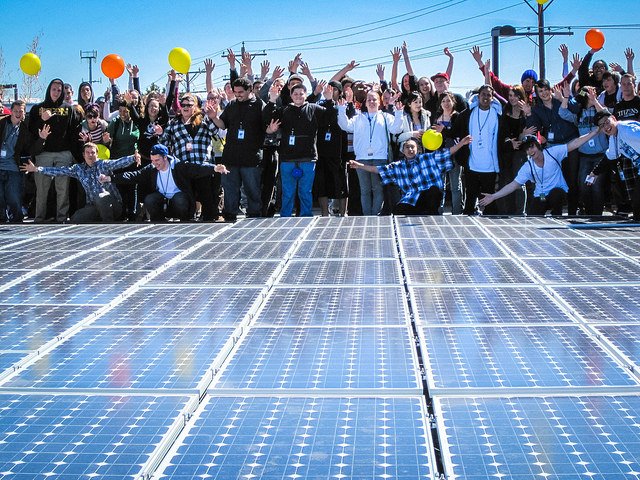Local clean energy ownership is described in the report as the ownership of clean energy projects by local people, organisations, or other community-based entities.

In order to fully reap the rewards of local energy ownership, policymakers, organisations, and local advocates must ensure that all communities have equitable access to clean energy ownership, according to a report from the Institute for Local Self Reliance.
Advantage Local: Why Local Energy Ownership Matters, a new report from the Institute for Local Self Reliance (ILSR), identifies numerous benefits of local ownership of clean energy, from addressing the climate crisis to reducing economic inequality to preventing corporate exploitation.
Local clean energy ownership is described in the report as the ownership of clean energy projects by local people, organisations, or other community-based entities. This covers both private initiatives like community solar and shared initiatives like rooftop solar panels on residents’ homes.
A small portion of the clean energy capacity in the US is made up of locally owned solar energy systems. Less than 1% of the installed capacity comes from community solar projects, and the remaining 10% comes from electric cooperatives, local utilities, and suppliers. Locals are more likely to own rooftop and on-site solar systems, with host-owned systems making up 65% of installed residential capacity and growing.
In addition to emphasising public support and economic impacts, the report highlights the advantages of local ownership and siting in clean energy. Local control can increase the effects of clean energy and return power to the people. Compared to outside ownership, residential solar owners can make up to $12,000 to $14,000 more over the course of the project.
Locally owned energy has the potential to eliminate systemic inequalities. State policies must, however, address upfront costs with better funding and incentives. The generous tax credits provided by the Inflation Reduction Act do not address upfront costs, which discourages low- to middle-income residents from making investments in clean energy.
According to a Lawrence Berkeley National Laboratory study, people with higher incomes are more likely to use solar power. Black and Hispanic households were underrepresented, and only 11% of adopters came from disadvantaged communities in 2021, when the median household income was $110,000.
In addition to racial and socioeconomic differences in homeownership, wealth, and financing, the ILSR report highlights obstacles to low- to middle-income households adopting clean energy, such as high upfront costs, insufficient government incentives, and utility interference.
Numerous advantages come with clean energy, including the production of carbon-free electricity, lower energy costs, and the creation of jobs. By fostering resilience, lowering pollution, and empowering people, it also benefits the neighbourhood.
The report suggests changing the law to promote the use of clean energy locally. By enhancing tax incentives, offering direct grants, and changing securities regulations, it addresses high upfront costs. Fair compensation and shared solar programmes are examples of supportive policies, which also encourage local ownership through “adders,” prioritisation, and carveouts and offer technical assistance for locally owned projects.